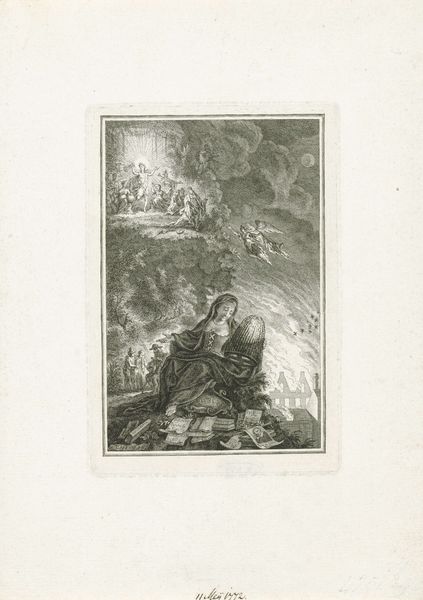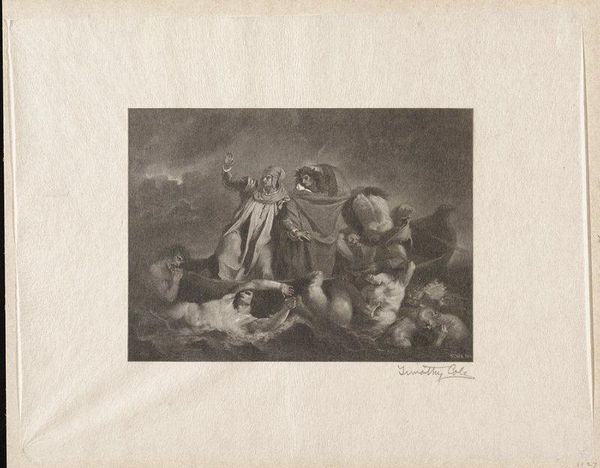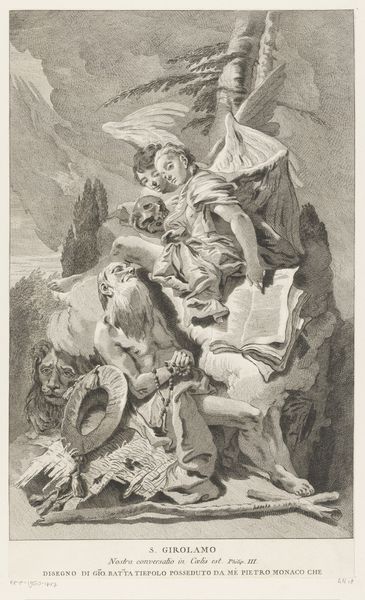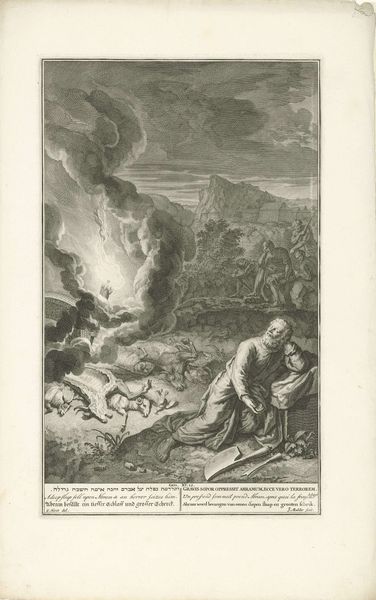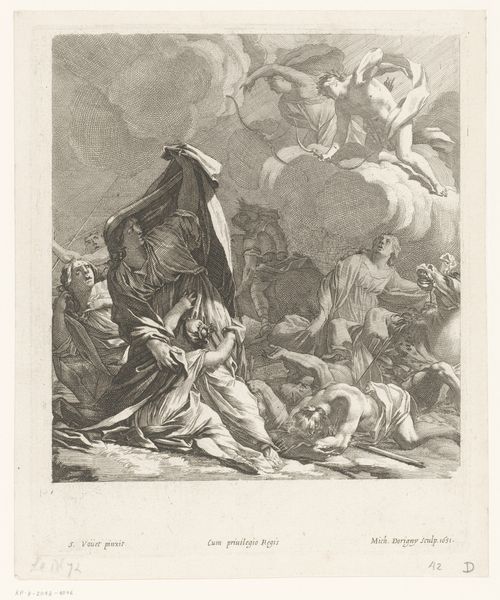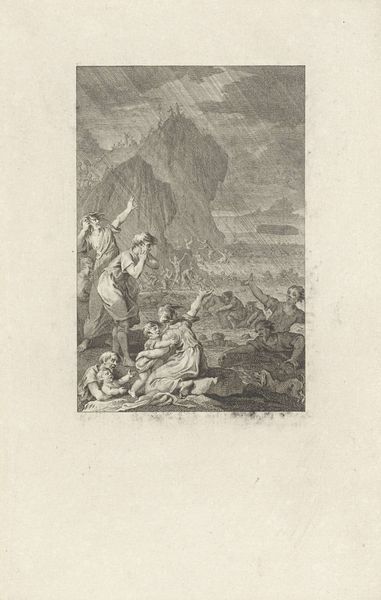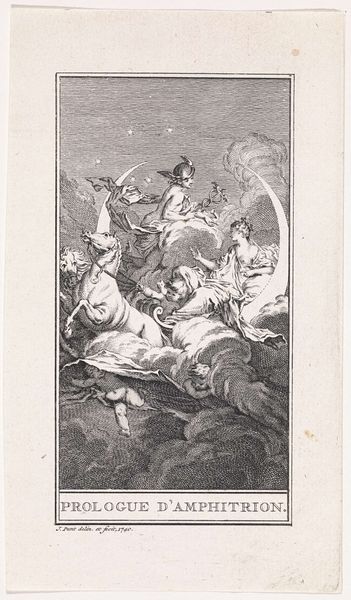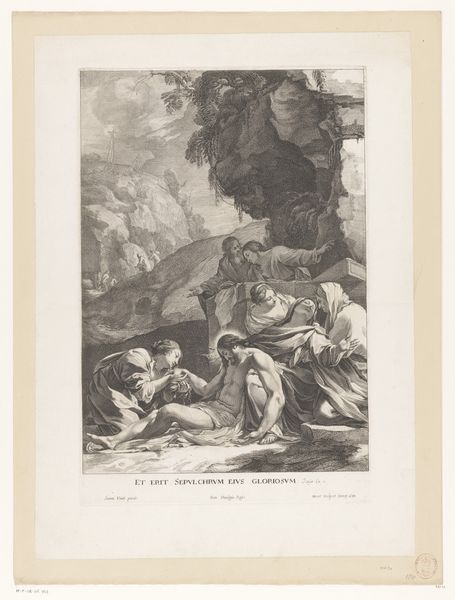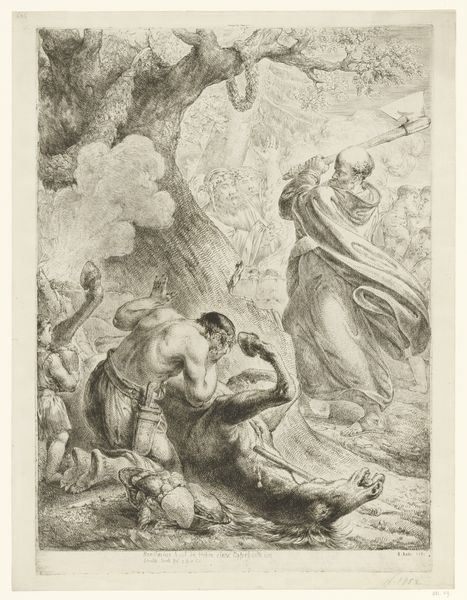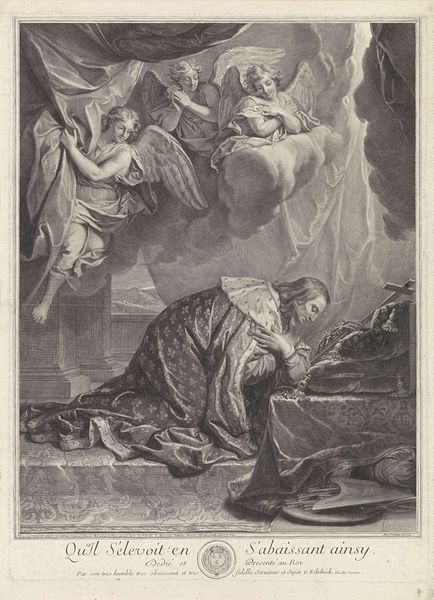
print, engraving
#
neoclacissism
# print
#
figuration
#
history-painting
#
engraving
Dimensions: height 204 mm, width 136 mm
Copyright: Rijks Museum: Open Domain
Editor: This is "Death of Pliny the Elder," an 1805 engraving by Ludwig Gottlieb Portman, currently held in the Rijksmuseum. It’s so dramatic! The stormy sky really sets the scene. What historical narratives do you see being communicated through this piece? Curator: This print reflects a fascination with classical antiquity that was prominent during the Neoclassical movement. These historical paintings were very fashionable. The story of Pliny’s death during the eruption of Mount Vesuvius resonated with audiences. It served a dual purpose: It showcased bravery, thirst for knowledge, but also, quite subtly, reminded viewers of nature's power over even the most knowledgeable. Considering the political climate of the early 19th century in Europe, how do you think imagery like this impacted notions of heroism or civic duty? Editor: I never considered how much that political context matters. The focus on heroism, even in the face of unavoidable natural disasters, really reframes it. Was there some push to show bravery for the sake of the nation, even if nature has no stake in this? Curator: Precisely. This narrative links individual actions to larger concepts of public service. It can shape perception to suggest citizens of the period could achieve the standards of great historical figures. Do you see how the artist makes Pliny’s demise not just a personal tragedy, but also a visual spectacle that embodies a greater lesson about human resilience in the face of political turbulence? Editor: It really clicks now. What I saw as simply "historical" is being used to push other beliefs and virtues. Thanks! It's given me new perspective. Curator: It’s about deciphering how the artist strategically uses history. Seeing art as evidence of culture is just the beginning.
Comments
No comments
Be the first to comment and join the conversation on the ultimate creative platform.
